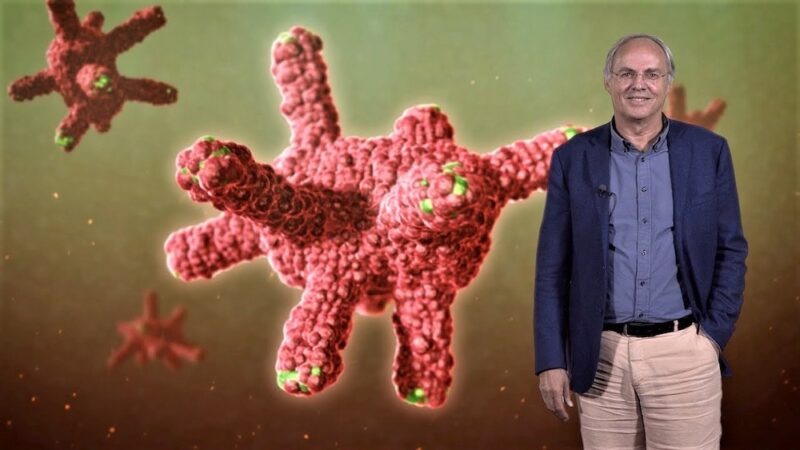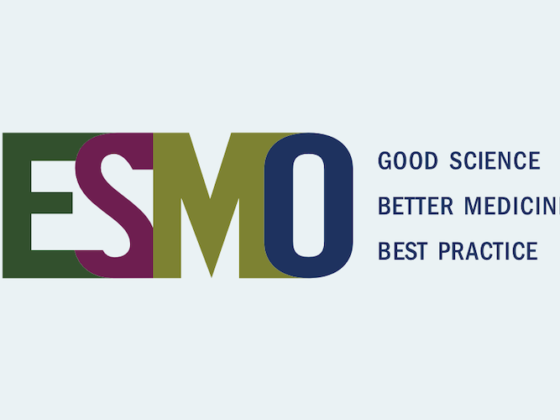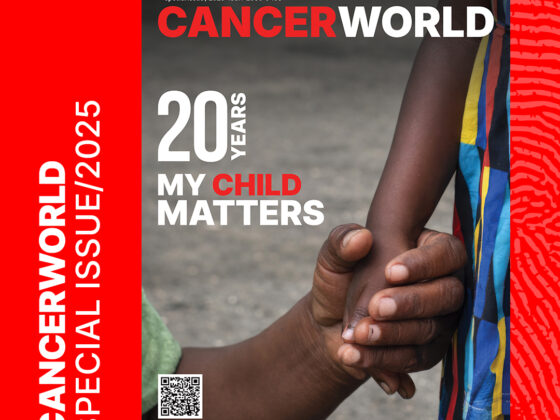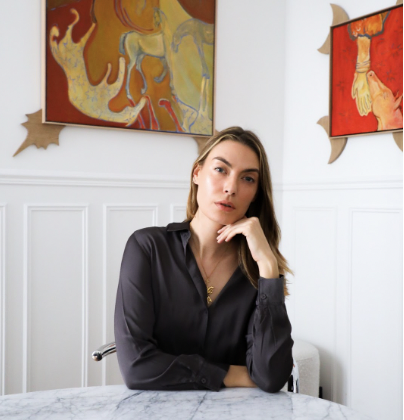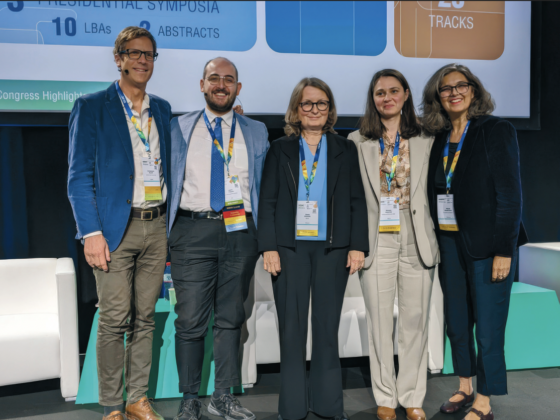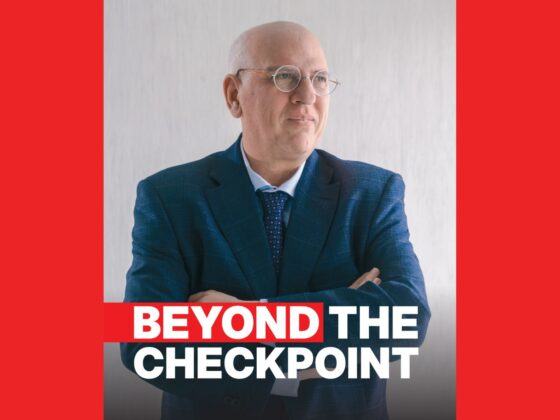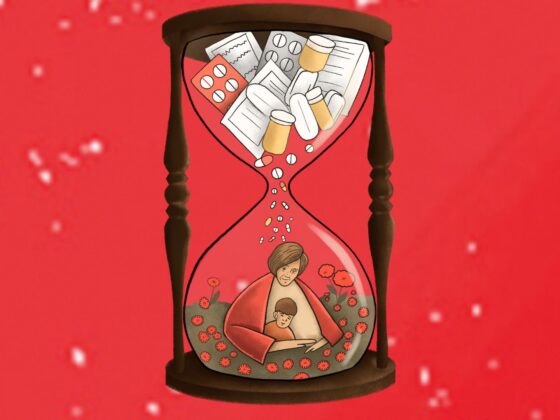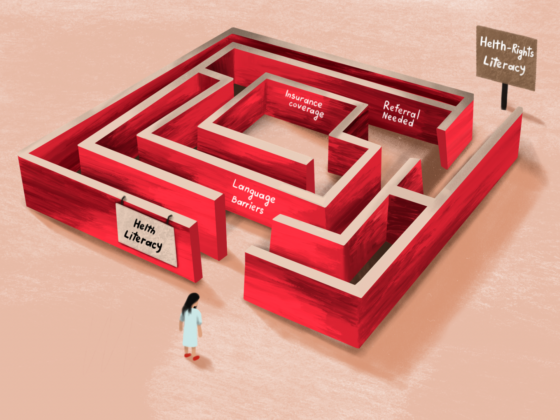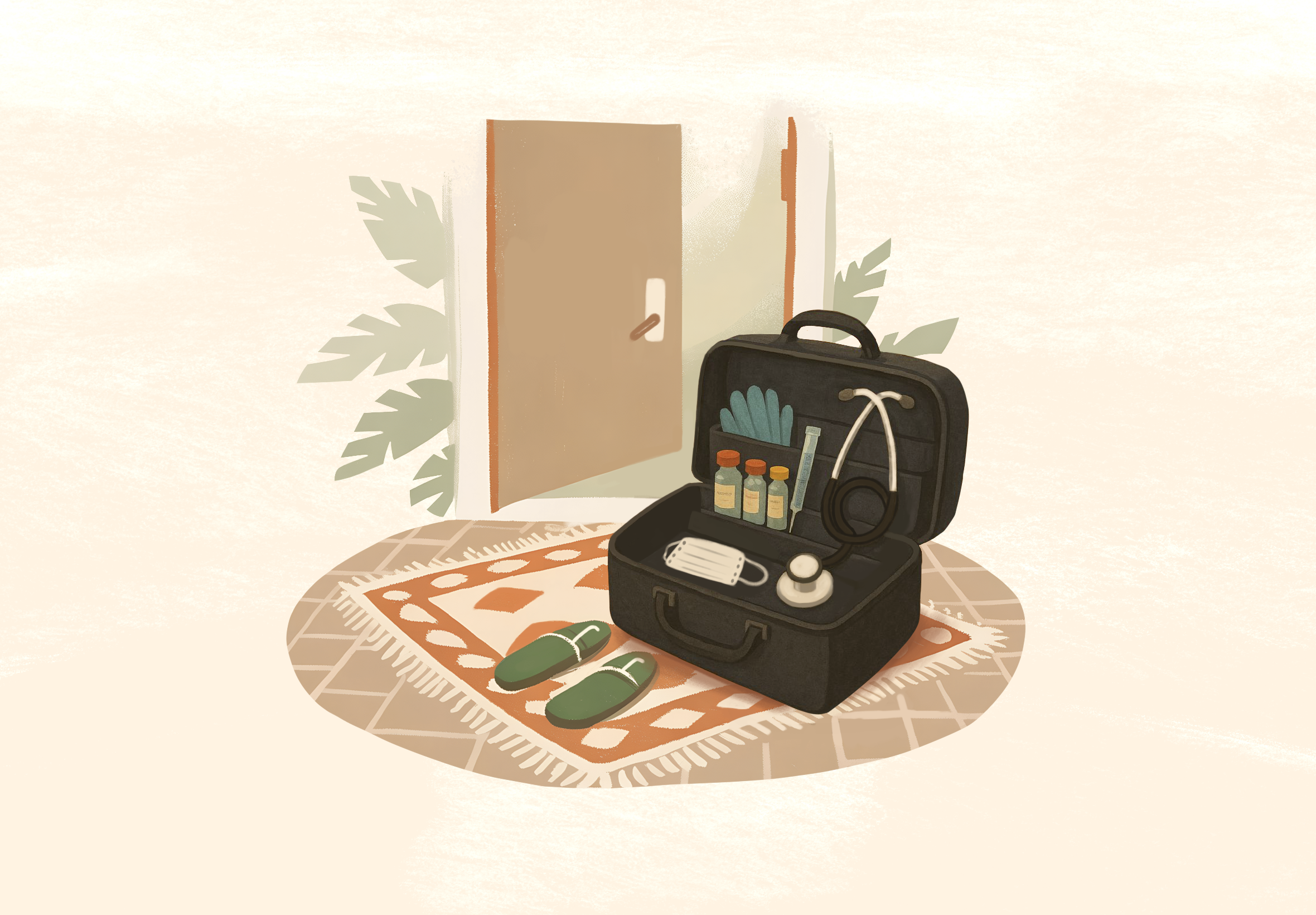Some twenty years ago, I sailed with my two little sons Sander (aged 7) and Max (aged 5) on the Ijsselmeer, formerly a large inner sea in the centre of my country. We passed by a beautiful row of newly built windmills, painted in soft colours and shining in the sun. We were mesmerized by the rapidly rotating wings of the windmills. Suddenly Max asked: “When the mills stop turning, will our boat also stop?” Max believed that the rotating windmills were causing the wind to blow.
This seemingly simple line of reasoning touches upon the core of science. Max is curious about the world around him, formulates a good question and defines an answer. One could call this answer of the 5-year old boy ‘a hypothesis’. Max’s hypothesis is a useful one, because it can be tested in a simple way. And, as you will realise, such critical testing will prove Max wrong: When the windmills are stopped ‒ for instance for maintenance ‒ it will turn out that the boats on the Ijsselmeer will still be perfectly capable of continuing to sail.
“The critical assessment of fact, cause, and consequence requires… a lifetime of effort, discipline, and energy”
The first part of this ‘question-and-answer’ game is deeply rooted in human nature. Even young kids like my son Max play this intuition game without any effort. But the next step, which turns this game into science ‒the step of critical assessment, of deciding what is fact, and what is cause and consequence ‒ turns out to be very hard. While intuition comes naturally to all of us, the critical assessment of fact, cause, and consequence requires lots of education and ‒ after that ‒ a lifetime of effort, discipline, and energy.
During the current Covid pandemic, we have witnessed an endless stream of highly creative thoughts, beliefs, and opinions that all are very believable, but that would evaporate when subjected to critical scientific assessment. But the originators of these highly creative thoughts, beliefs, and opinions, are typically very reluctant to take the second, scientific, step.
The amazing history of science
Science has only arisen once in the history of mankind. Not in ancient Egypt or China, not among the Mayans and Aztecs of South America. The cradle of science was located in Athens. The ancient Greeks were no longer satisfied with their myths and religions and started to search for the laws of nature. Thus, the ancient Greeks have given us the mathematics of Euclid, Archimedes and Pythagoras. The Roman empire had a definite interest in technology, but ‒ I am sorry to say here ‒ the Romans didn’t care much about the science of the Greeks. Only in the renaissance did science re-emerge: a key player was the Italian Galileo Galilei, who made up for the Roman disinterest. And the Englishman Francis Bacon put the cherry on the science-pie: he invented laboratory experimentation.
Albert Einstein has summarised the emergence of science in the history of the world as follows: “The development of Western science has been based on two great achievements, the invention of mathematics by the Greek philosophers, and the discovery of finding out causal relationships by systematic experiment in the Renaissance. In my opinion one need not be astonished that the Chinese sages did not make these steps. The astonishing thing is that these two achievements occurred at all.”
“The ancient Greeks gave us mathematics… and Francis Bacon put the cherry on the science-pie: he invented laboratory experimentation”
The successes of the scientific method in the past two centuries have simply been overwhelming. Just look around you: almost everything that you see exists only because of science. Yet, the world has never really embraced science. Most people don’t know how science works. There is often distrust of scientific conclusions, and fear of unexpected consequences of science. Just think of the current, unfortunate fear of Covid vaccines. The British biologist Lewis Wolpert states the following in his book The unnatural nature of science about the uneasy relationship between man and science: “Science can be quite uncomfortable to live with. It offers no hope for an afterlife, it tolerates no magic and it doesn’t tell us how to live.”
It is this two-step mechanism of trying to understand the world around us that has always intrigued me and that I have tried to exploit in the research in my lab: On the one hand there is the first step: human intuition, which allows us to ask and answer all sorts of questions and is a never-ending source of creativity. On the other hand there is the second step: the rational, scientific approach that subjects these questions and answers to harsh and critical evaluation, often involving experiments in the lab. And, more often than not, resulting in a negative answer. The hypothesis was creative and attractive, but wrong. Go back to square one and start all over again.
My own science journey
I was asked to tell you a bit about myself and my journey in Science. I was born and raised in a small village in the catholic south of Holland. As soon as I learned how to read, I devoured many books every week ‒ on every imaginable subject, but I liked the books about scientific discoveries most. You could call me a nerd already at Kindergarten: I remember vividly how the teachers there would stand around me and ask what I wanted to become later in life: biologist!
Indeed, as an 18-year-old, I started my study of biology at Utrecht University in 1975. I was immediately deeply disappointed. I felt biology was not yet an experimental science, unlike chemistry and physics. We learned endless lists of Latin words and names, and nothing much else. I decided to also go to medical school and graduated in both. The attraction of the medical profession was inevitable: clear social status, transparent future and every day filled with lots of social interactions. And most importantly, every day I was given a number of problems and could solve at least some of these. This type of instant gratification does not exist in science, where one has to work for months to obtain a result, and then most of the time, the outcome is negative and one has to go back to the drawing table. Moments of gratification are rare and far in between.
I was offered a training position in paediatrics but was also advised to start with one year of research. In that year, I learned that my heart was in science, despite all its challenges. I quit the hospital and went to Harvard with my wife Eefke, to learn the tricks of a magical new toolbox in biology: DNA technology. Four years later we returned to Utrecht and I started the journey in my own little lab that has taken me to this stage here today.
In my little lab, we asked a simple open question: How do white blood cells, the cells that fight virus infections, get produced in our body? I soon became head of the Immunology Department and learned how to combine managerial tasks with the science in my lab.
“We didn’t learn much about the white blood cells, but totally unexpectedly solved a key question in developmental biology”
We found an interesting gene, but ‒ while we were researching this gene, we didn’t learn much about the white blood cells, but totally unexpectedly solved a key question in a very different scientific discipline: developmental biology, which studies how embryos create a complete body from one fertilised egg cell. And we also solved how colon cancer comes about. I can be totally honest: we were never looking for these discoveries, we just stumbled across these. This is called serendipity: discoveries that were made without looking for them.
Because our discoveries led us away from studying the immune system, I decided to leave Utrecht University Hospital and moved my lab (grown to thirty young researchers) to the nearby Hubrecht Institute of the Royal Netherlands Academy of Arts and Science. I became director of the Institute and could almost completely devote myself to my lab.
We decided to focus on colon cancer and on the ‘healthy counterpart’ of colon cancer cells: stem cells. It was known that all organs in our body should harbour dedicated stem cells, whose sole task is the maintenance and repair of the organ in which they reside, throughout life. Every organ was believed to be maintained and repaired by a unique stem cell type. There could exist as many as a hundred stem cell types, but only a handful had already been discovered.
A British postdoc, Nick Barker (now running his own lab in Singapore) expertly applied the Step 1/Step 2 approach that I described earlier. He started this project in 2000. The first four to five tries yielded negative results, but in 2006 he suddenly stumbled across a new molecular flag, named Lgr5, that allowed us to identify the stem cells of the gut and subsequently the stem cells of many other organs. Nick created mice in which these stem cells emit a green light. As you know, normal mice don’t emit light, so we could ‒ for the first time ‒ see stem cells in action in a living being.
“Rather than producing more stem cells, it created a tiny version of a normal gut in the dish. Another case of serendipity”
We soon realized ‒ based on what we were seeing in these mice ‒ that it should be possible to take the light-emitting stem cells out of these mice and culture them in the lab, in a plastic dish. I should mention at this point that it was generally believed around the world, that normal healthy cells cannot be cultured outside the body and that only cancer cells will grow in a plastic laboratory dish. Because of this dogma, no one in the lab wanted to give this a try. Then, Toshiro Sato, a Japanese gastroenterologist who was new to the lab said: “I will do it”.
He went to the Step 1/Step 2 procedure. Starting from one light-emitting gut stem cell, he wanted to grow many stem cells in the dish, much like one can grow a plant from a seed. But much to our surprise, the stem cell did much more: Rather than producing more stem cells, it created a tiny version of a normal gut in the dish. Another case of serendipity: a breakthrough discovery we were never looking for. Toshi called the structures that he was growing ‘mini-guts’.
We then rapidly realised that Toshi’s trick could be played for almost all other organs from mice and man, to grow mini-organs in a dish. The scientific name for these mini-organs-in-a-dish nowadays is ‘organoid’. The technology is simple. One simply needs to obtain a tiny piece of tissue of an organ of interest and put it in the right cocktail of nutrients. Doctors take such samples routinely from patients and call these samples ‘biopsies’. We just need one millimetre-sized biopsy to start the growth of organoids from individual patients.
Organoids in cancer research and clinical practice
Over the past decade since Toshi’s discovery, we and many other labs have further developed the mini-organ technology and described many applications for basic science, but importantly also for clinical application. To name a few of the applications:
- Mini-organs grown in the lab can be used for transplantation to replace damaged organs. This has been shown in experimental animals for liver and gut diseases and, for instance, for dry mouth disease. Currently, transplantation of mini-organs is tested in clinical trials involving patients in the Netherlands and in Japan.
- Mini-organs grown from patients with particular diseases can be used to develop new drugs for those diseases. This is now extensively done for cancer.
- Mini-organs grown from an individual patient can be used as an ‘avatar’ for that patient. Multiple drugs can be tested at the same time on the mini-organs and the best one can then be given to the patient. This is called ‘personalised medicine’. This approach is already applied with success for cystic fibrosis, a rare hereditary disease. Currently, many labs around the world are trying the same approach for cancer patients: Mini-tumours are grown from individual cancer patients and exposed to a series of cancer drugs. The best one may then be given to the patient.
“Mini-organs grown from patients with particular diseases can be used to develop new drugs for those diseases”
My lab currently works on a variety of organs and diseases, including cancers, infectious diseases such as Covid and a range of hereditary diseases. The use of the human organoids allows us now to avoid animal experiments, while we believe that we obtain insights in human diseases in a model that comes closest to the human body: the mini-organs.
Looking back, it has been a journey with many unexpected turns and surprises. It has been a privilege to pursue the dream that I had as a four- year-old. I hope that I have conveyed today some of my belief in the value and beauty of science, even if it doesn’t always come naturally.
Science prizes are important as they briefly put science and scientists into the limelight. I would like to stress that I stand on this stage, but that the Pezcoller International AACR Award for Extraordinary Achievement in Cancer Research is awarded for the work of several hundred, young and always passionate, researchers.
Thank you very much for this honour.
Tumor Organoid Cancer Research Applications
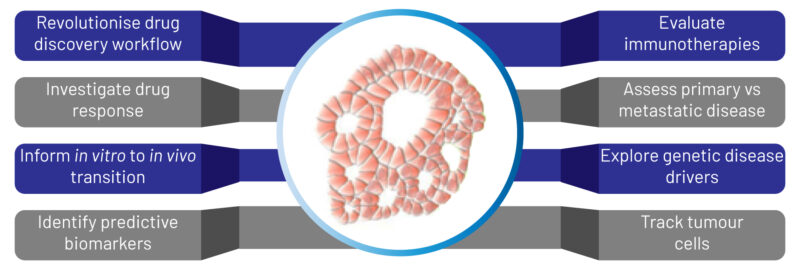
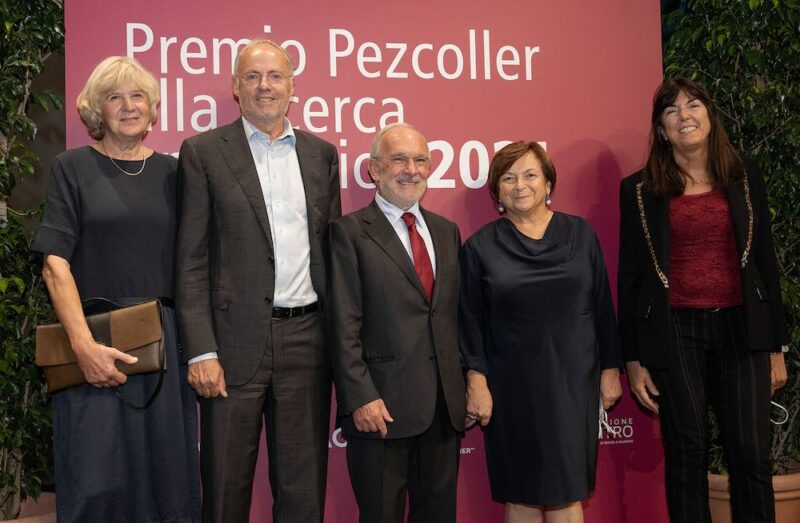
Hans Clevers (second from left) and his wife Eefke Petersen, pictured after the award ceremony standing next to the president of the Pezcoller Foundation Enzo Galligioni, and his wife, Annaluisa Grossi, with Adriana Albini, Cancer World editor, on the right
This text was published with the kind permission of Hans Clevers
The speech was delivered by Hans Clevers at the ceremony in Trento, Italy, September 18, where he accepted the 2021 Pezcoller Foundation‒AACR International Award for Extraordinary Achievement in Cancer Research. The first part is adapted from a speech he gave as president of the Royal Netherlands Academy of Arts and Sciences in 2012.
The Pezcoller Foundation‒AACR International Award for Extraordinary Achievement in Cancer Research was established in 1997 to recognise a scientist of international renown who has made a major scientific discovery in basic cancer research or who has made significant contributions to translational cancer research.
Hans Clevers, is Principal Investigator (and past Director) at the Hubrecht Institute for Developmental Biology and Stem Cell Research. The 2021 Pezcoller‒AACR award honoured him for for a series of breakthrough discoveries that led to the development of mini-organs, no known as ‘organoids’.

